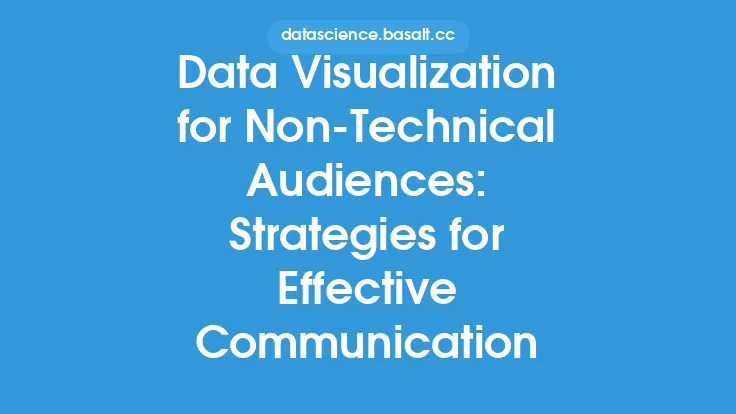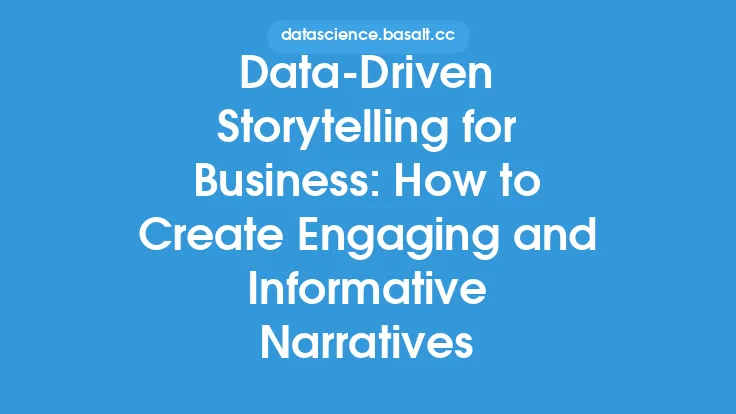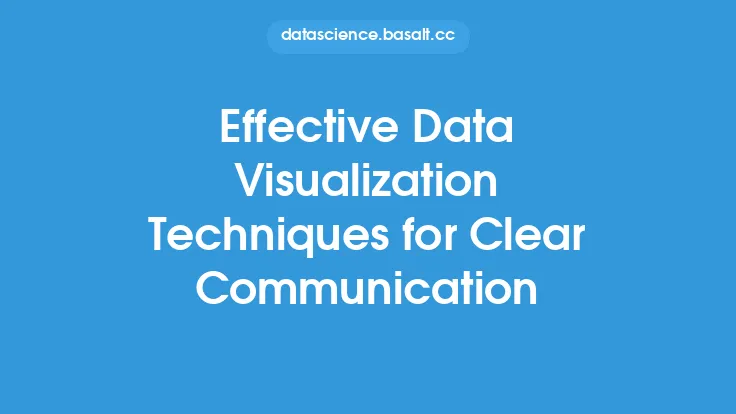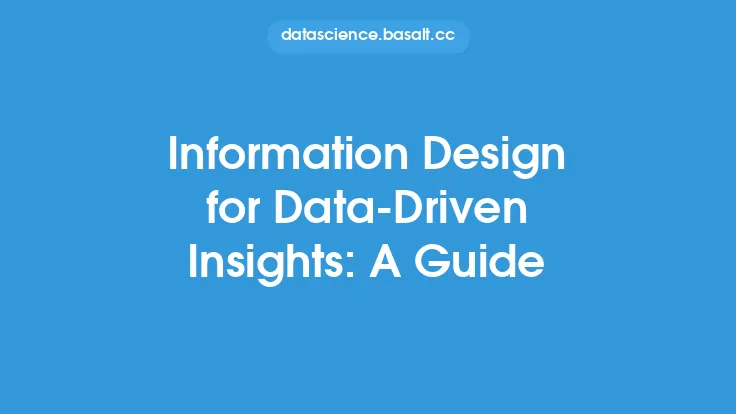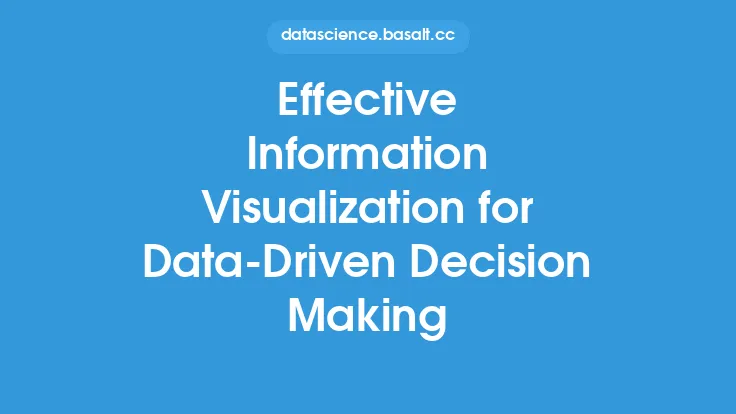Effective communication is the backbone of any successful endeavor, and in today's data-driven world, being able to convey complex information in a clear and concise manner is more important than ever. Data-driven narrative techniques offer a powerful tool for achieving this goal, allowing individuals to transform raw data into engaging and informative stories that captivate and persuade their audience. At its core, data-driven narrative is about using data to tell a story that resonates with people, rather than simply presenting facts and figures. By leveraging the power of narrative, individuals can create a deeper connection with their audience, convey complex ideas in a more accessible way, and ultimately drive meaningful insights and actions.
Understanding the Fundamentals of Data-Driven Narrative
To effectively utilize data-driven narrative techniques, it's essential to understand the fundamental principles that underlie this approach. Data-driven narrative is built on the idea that data can be used to tell a story that is both informative and engaging. This involves identifying key trends, patterns, and insights within the data, and then using these findings to craft a narrative that is both compelling and easy to follow. The process typically begins with data analysis, where individuals use various tools and techniques to extract insights from the data. These insights are then used to develop a narrative structure, which provides the framework for the story. The narrative structure typically includes key elements such as a clear beginning, middle, and end, as well as a well-defined protagonist and antagonist.
The Role of Data Visualization in Data-Driven Narrative
Data visualization plays a critical role in data-driven narrative, as it provides a powerful means of communicating complex information in a clear and concise manner. By using visualizations such as charts, graphs, and maps, individuals can create a more engaging and interactive experience for their audience, and help to illustrate key points and trends within the data. Effective data visualization involves selecting the right type of visualization for the task at hand, and using it in a way that is both intuitive and easy to understand. This may involve using color, size, and other visual elements to draw attention to key findings, and creating interactive visualizations that allow the audience to explore the data in more detail. Some common data visualization tools include Tableau, Power BI, and D3.js, each of which offers a unique set of features and capabilities for creating interactive and dynamic visualizations.
Crafting a Compelling Narrative with Data
Crafting a compelling narrative with data involves several key steps, including developing a clear and concise message, identifying the target audience, and selecting the most effective channels for communication. The message should be focused on the key insights and findings from the data, and should be presented in a way that is both engaging and easy to understand. The target audience should be clearly defined, and the narrative should be tailored to their specific needs and interests. The channels for communication may include presentations, reports, dashboards, and other types of data visualizations, each of which offers a unique set of advantages and disadvantages. By carefully considering these factors, individuals can create a narrative that resonates with their audience, and helps to drive meaningful insights and actions.
Technical Considerations for Data-Driven Narrative
From a technical perspective, data-driven narrative involves several key considerations, including data quality, data governance, and data security. Data quality is critical, as it directly impacts the accuracy and reliability of the insights and findings that are presented. Data governance involves establishing clear policies and procedures for data management, including data collection, storage, and analysis. Data security is also essential, as it helps to protect sensitive information and prevent unauthorized access. In addition to these considerations, individuals should also be aware of the various tools and technologies that are available for data-driven narrative, including data visualization software, statistical analysis packages, and data management platforms. Some common programming languages for data-driven narrative include Python, R, and SQL, each of which offers a unique set of features and capabilities for data analysis and visualization.
Best Practices for Effective Data-Driven Narrative
To ensure effective data-driven narrative, several best practices should be followed, including keeping the narrative simple and focused, using clear and concise language, and avoiding technical jargon and complex terminology. The narrative should be tailored to the target audience, and should be presented in a way that is both engaging and easy to understand. Interactive visualizations and other types of dynamic content can be used to create a more immersive and interactive experience, and help to illustrate key points and trends within the data. Additionally, individuals should be aware of the various cognitive biases and heuristics that can impact the way that people perceive and interpret data, and should take steps to mitigate these biases and ensure that the narrative is presented in a fair and balanced way.
Real-World Applications of Data-Driven Narrative
Data-driven narrative has a wide range of real-world applications, including business, healthcare, education, and government. In business, data-driven narrative can be used to communicate complex financial information, identify trends and patterns in customer behavior, and inform strategic decision-making. In healthcare, data-driven narrative can be used to track patient outcomes, identify areas for quality improvement, and communicate complex medical information to patients and families. In education, data-driven narrative can be used to track student performance, identify areas for improvement, and inform instructional design. In government, data-driven narrative can be used to communicate complex policy information, track program outcomes, and inform budgetary decisions. By leveraging the power of data-driven narrative, individuals and organizations can create a deeper connection with their audience, convey complex ideas in a more accessible way, and ultimately drive meaningful insights and actions.
Future Directions for Data-Driven Narrative
As the field of data-driven narrative continues to evolve, several future directions are likely to emerge, including the increased use of artificial intelligence and machine learning, the development of new data visualization tools and technologies, and the growing importance of data storytelling in business and other fields. Artificial intelligence and machine learning can be used to automate the process of data analysis and visualization, and help to identify key trends and patterns within the data. New data visualization tools and technologies, such as virtual and augmented reality, can be used to create more immersive and interactive experiences, and help to illustrate complex ideas and concepts in a more engaging and accessible way. As data storytelling becomes increasingly important in business and other fields, individuals and organizations will need to develop the skills and expertise necessary to communicate complex data insights in a clear and compelling way, and drive meaningful insights and actions.
